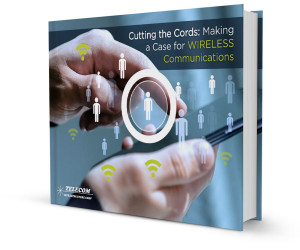
How SpiderCloud Is Changing The Way We Do Indoor Cellular
Connectivity becomes more important every day, as cellular and WiFi-enabled devices become large facets of everyday life and business stops being tethered to a desk or desktop computer. As many advantages as the leaps forward in mobile technology have provided for both businesses and consumers, they have also drawn attention to the increasingly widespread problem that cellular coverage just isn’t keeping up with the demand. Dead zones aren’t just something out of The Walking Dead, they’re a large part of our indoor cellular experience.
Rural areas, sheltered locations and medium to large buildings can be dead zones for cellular coverage. This situation leads to the strange phenomenon of a metropolitan conference center becoming as cut off from the rest of the world as a remote outpost in Antarctica, via lack of cellular coverage. Large scale solutions to combat cellular dead zones can be expensive and difficult to justify for some smaller venues, but the faster mobile technology integrates itself into every aspect of life, the more dead zones become less of an annoyance and more of a serious problem.
SpiderCloud, a California-based startup, has a unique solution to the cellular dead zone problem. They are treating spotty cellular coverage not as one big problem, but as a series of smaller problems all strung together. Using small cells – a catch-all term for discrete, linkable short-range RF transmitters – SpiderCloud is creating an affordable, scalable cellular Distributed Antenna System designed for medium and large enterprises and venues; a system that is both much more affordable and much more effective than any other solution for providing complete cellular coverage to medium and large buildings.
On its own, a single one of SpiderCloud’s small cells isn’t particularly impressive. Each one has an in-building range that is only in the tens of meters, enough to provide coverage to a small-ish room, but useless over large distances. SpiderCloud’s small cells are not, however, designed to be used one at a time. Instead, the small cells are designed to be used in concert, with many small cells linking together to provide networked coverage over a large area. The system is almost infinitely scalable: while a small venue can make do with a small network, a large venue can continue adding small cells to provide powerful and evenly-distributed coverage over the entire venue. Signal strength and dead zones cease to be issues, as individual small cells can be added to the network to add coverage to specific areas in the venue, and the built-in redundancy of a network of small cells means that if a cell breaks or needs maintenance, the loss of coverage to the entire venue is absolutely minimal.
The infinite scalability factor is definitely one of the unique features of SpiderCloud’s Small Cell deployment model, but SpiderCloud has some other game changing features up their sleeve as well. One of SpiderCloud’s most characteristic features is it’s Self Organizing Network (SON). The intelligent SON feature means that their small cell Distributed Antenna Systems have the ability to self configure, self optimize and self heal; this centralized, single point integration means it’s capable of extremely rapid deployments because there is no manual configuration required.
Another reason, and probably the most important reason, SpiderCloud is standing out from other indoor cellular companies is because their technology is capable of using a building’s existing Ethernet infrastructure for connectivity and power. That’s right, add another switch to your IT rack and you’re off and running. No large orders of tens of thousands of feet of half-inch coax cable are required to serve as the horizontal backbone for their small cells, it’s all run on traditional twisted pair cabling (Cat5e or better). Not only does this translate into major time savings, but it also translates into major money savings as well. In fact, SpiderCloud technology boasts up to 10x the capacity of comparable Distributed Antenna Systems at less than half the price. It’s kind of a big deal.
SpiderCloud’s little-startup-that-could mentality is making waves and winning it valuable friends. In the US, SpiderCloud has partnered with Verizon Wireless for cellular coverage over its small cell systems, while in the UK and Europe SpiderCloud is working with Vodafone and other major mobile carriers. On the east coast, installations have begun in Philadelphia and New York, and venues in Boston are next in line to upgrade their wireless coverage with SpiderCloud’s small cell systems. With such effective technology, strong partnerships, and an IPO on the horizon, SpiderCloud could very well change the way medium to large venues handle cellular coverage almost single-handedly. And who’s the east coast telecommunications firm that’s certified in SpiderCloud Small Cell technology? None other than Telecom Infrastructure Corp.
If you’re interested in upgrading the indoor cellular coverage for your building or office space, then don’t wait, call Telecom today and ask about Distributed Antenna Systems and SpiderCloud.

 Wired networking is quickly becoming the dial up internet of the current decade as wireless technology is advancing at an incredibly rapid pace. Is going wireless in the best interest of your business? Download our FREE book right now entitled "Cutting the Cords: Making a Case for Wireless Communications" and find out!
Wired networking is quickly becoming the dial up internet of the current decade as wireless technology is advancing at an incredibly rapid pace. Is going wireless in the best interest of your business? Download our FREE book right now entitled "Cutting the Cords: Making a Case for Wireless Communications" and find out!